#18th #Century #Flower #Marquetry #Origins #Technique
Flower marquetry, one of the most beautiful and intricate forms of decorative inlay, flourished during the 18th century. This delicate art form left a lasting legacy in the world of antique furniture, particularly in the Rococo and Louis XV periods, where it reached its peak. Whether adorning furniture, mirrors, or decorative objects, the elegance and vibrancy of 18th century flower marquetry continue to captivate art lovers, antique enthusiasts, and collectors alike. In this blog post, we’ll explore the origins, technique, and lasting appeal of flower marquetry from the 18th century.
Origins of 18th century Flower Marquetry
Flower marquetry originated in Renaissance Italy, but it wasn’t until the 17th and 18th centuries that it fully blossomed. During this period, artisans in France and Italy perfected the technique. The word “marquetry” comes from the French term “marqueter,” meaning to decorate or inlay with pieces of wood or other materials.
Though early forms of inlay existed during the Renaissance, the 18th century saw an explosion of floral designs. Flower motifs became a hallmark of the Rococo style, known for its ornate, asymmetrical designs that embraced nature. Flower marquetry was the perfect medium to express this aesthetic, allowing artisans to recreate nature’s beauty on furniture and decorative pieces.
While the technique spread across Europe, Italy was home to many skilled craftsmen in cities like Florence and Venice. In France, during the reign of Louis XV, flower marquetry became synonymous with luxury. It adorned the works of renowned French cabinetmakers like Jean-François Oeben and Pierre Migeon, influencing design for generations.
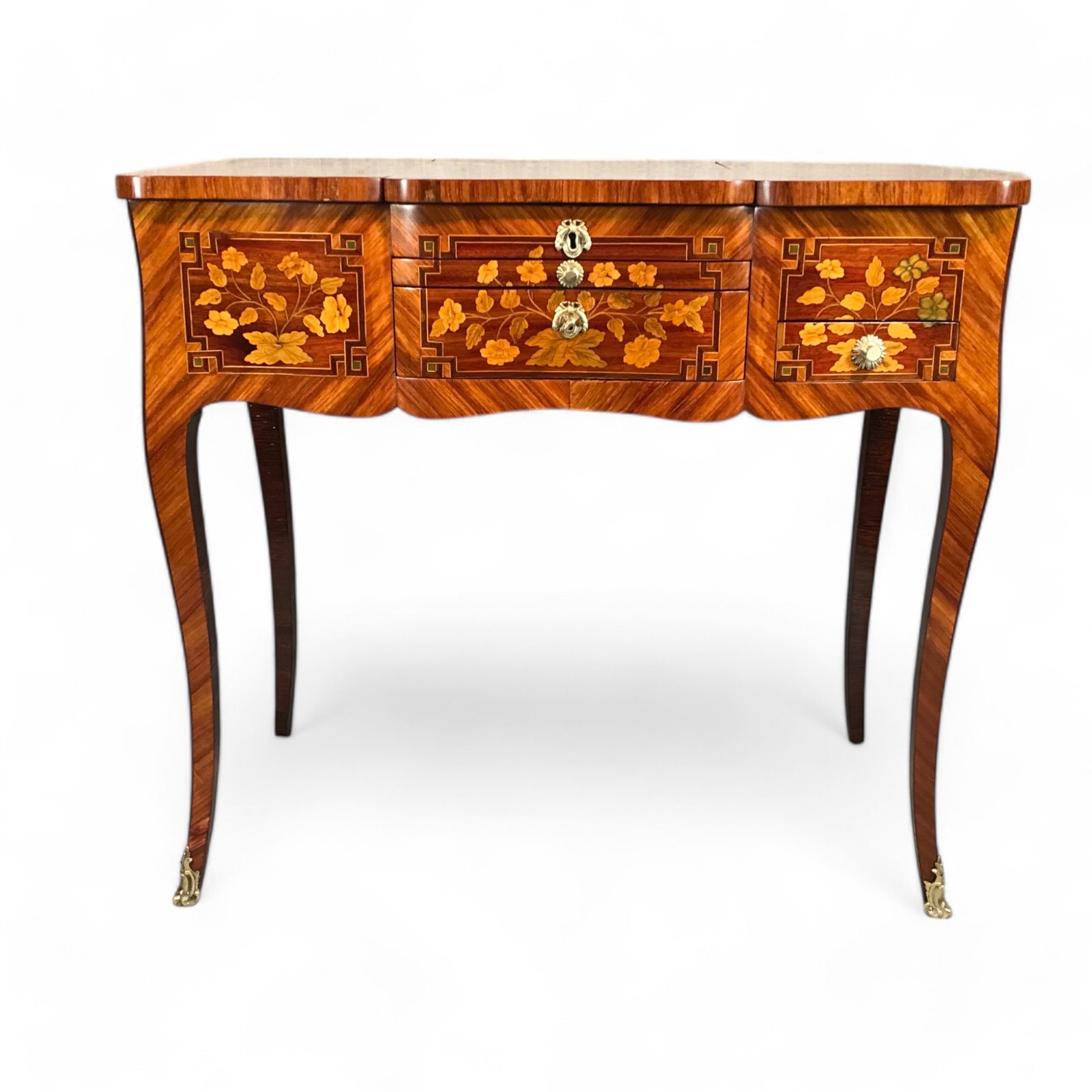
The Influence of Botanical Studies on 18th century Flower Marquetry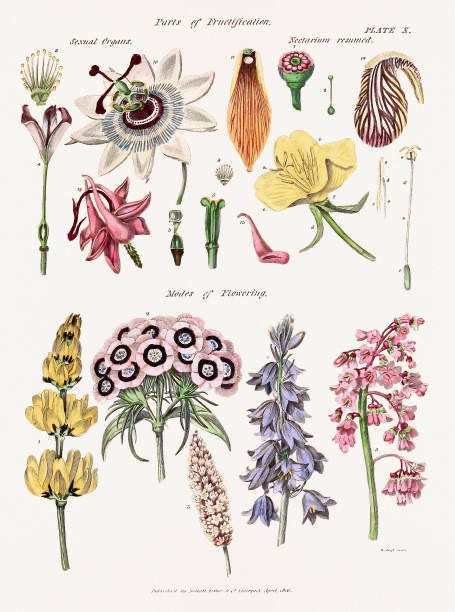

The 18th century marked an era of growing interest in botanical studies. Advances in the study and classification of plants, coupled with the rise of botanical illustrations, influenced many artistic movements. These detailed, scientific illustrations inspired flower marquetry artisans to depict flowers with increasing accuracy, transforming their designs into both artistic and scientific representations.
Naturalists like Carl Linnaeus contributed to the study of plants, cataloging and illustrating species with great precision. These botanical illustrations became key references for marquetry artisans, helping them create lifelike and accurate depictions of flowers. Some craftsmen even replicated specific flowers from these studies, honoring both nature and the scientific advancements of the time.
This blending of art and science also added depth and symbolism to flower marquetry. Flowers like roses, lilies, and tulips weren’t just beautiful—they carried meanings tied to human emotions and natural elements. Roses symbolized love and passion, while lilies represented purity. Flower marquetry conveyed these symbolic meanings while showcasing the period’s admiration for both nature’s beauty and botanical discoveries.
The Technique of Flower Marquetry
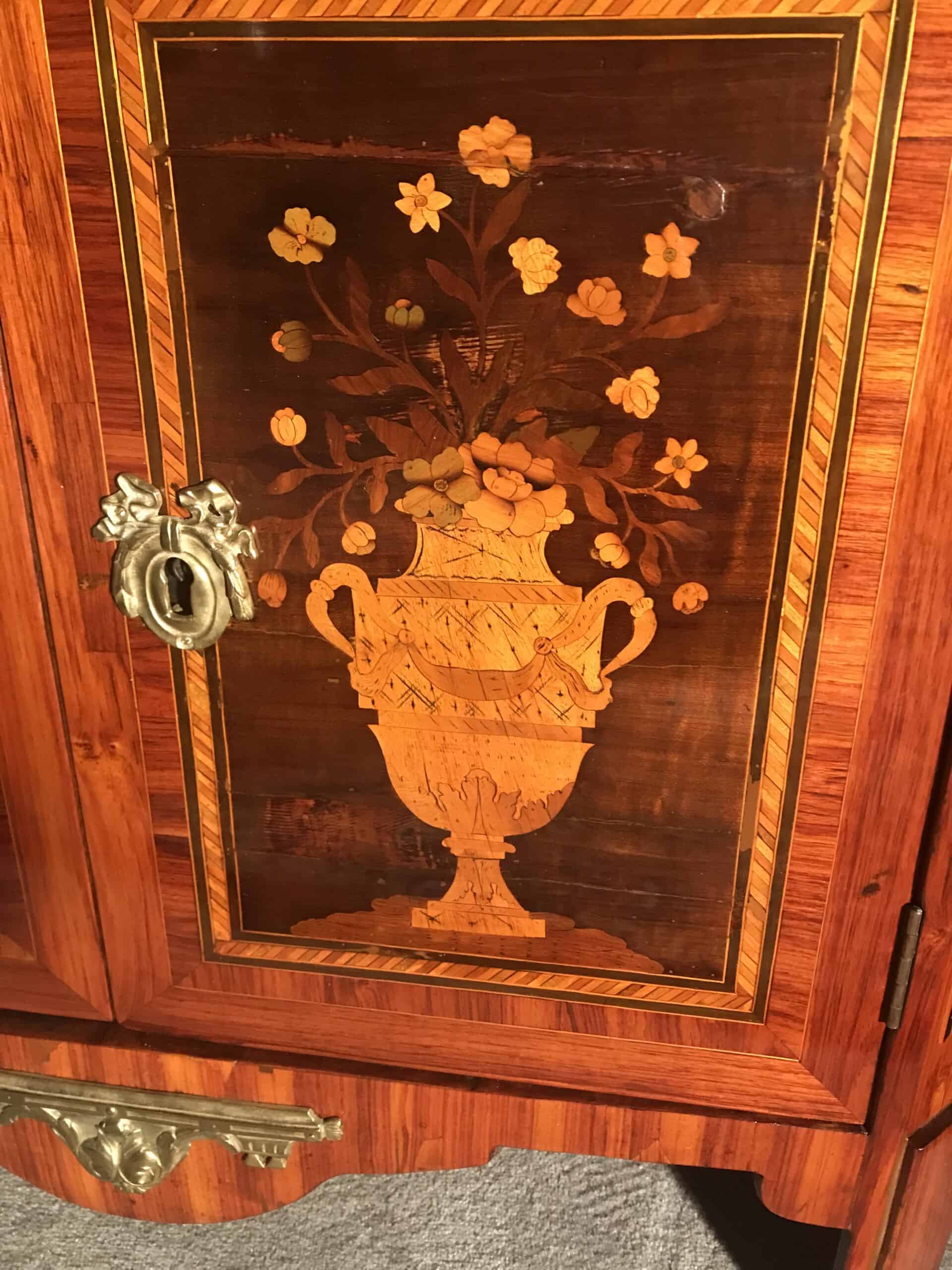

Creating 18th century flower marquetry required exceptional skill and patience. Craftsmen spent months on a single piece, meticulously assembling tiny floral designs. The process involved inlaying various materials such as wood, metals, and sometimes ivory to form detailed floral patterns.
The first step in creating flower marquetry was selecting the right materials. Craftsmen chose woods like walnut, rosewood, and mahogany for their color and texture. For the floral elements, they used delicate woods like maple, holly, and satinwood. These woods were sliced into thin veneer sheets, then cut into intricate shapes to form flowers.
The striking beauty of flower marquetry stemmed from its use of contrasting materials. For example, ivory or mother-of-pearl often formed the petals, while darker woods like walnut provided a backdrop that made the flowers stand out. Artisans sometimes incorporated metals like brass or copper to add shimmer and enhance the design’s visual impact.
To make flowers look realistic, artisans layered petals and leaves, adding depth and texture. This technique created a three-dimensional effect, making the flowers appear almost lifelike. The use of shading and precise placement of each inlay was key to achieving a naturalistic look.
Once the inlay was complete, the furniture or object went through a finishing process. Artisans sanded the surface smooth, ensuring the inlays were flush with the wood. They then applied a layer of varnish or lacquer to protect the surface and bring out the vibrant colors of the flowers.
Popular Flower Motifs in Marquetry
Flower motifs like roses, tulips, daisies, and carnations were the most commonly used in 18th century flower marquetry. These flowers were not only beautiful but also carried symbolic meanings. Roses, for instance, symbolized love, while tulips represented elegance and prosperity.
The Rococo style embraced these floral motifs, celebrating nature, romance, and femininity. The curvaceous forms of Rococo design blended well with the delicate lines of flowers, creating harmony between the two. Floral marquetry was also sometimes paired with other natural elements like butterflies, birds, and insects, emphasizing the connection between art and the natural world.
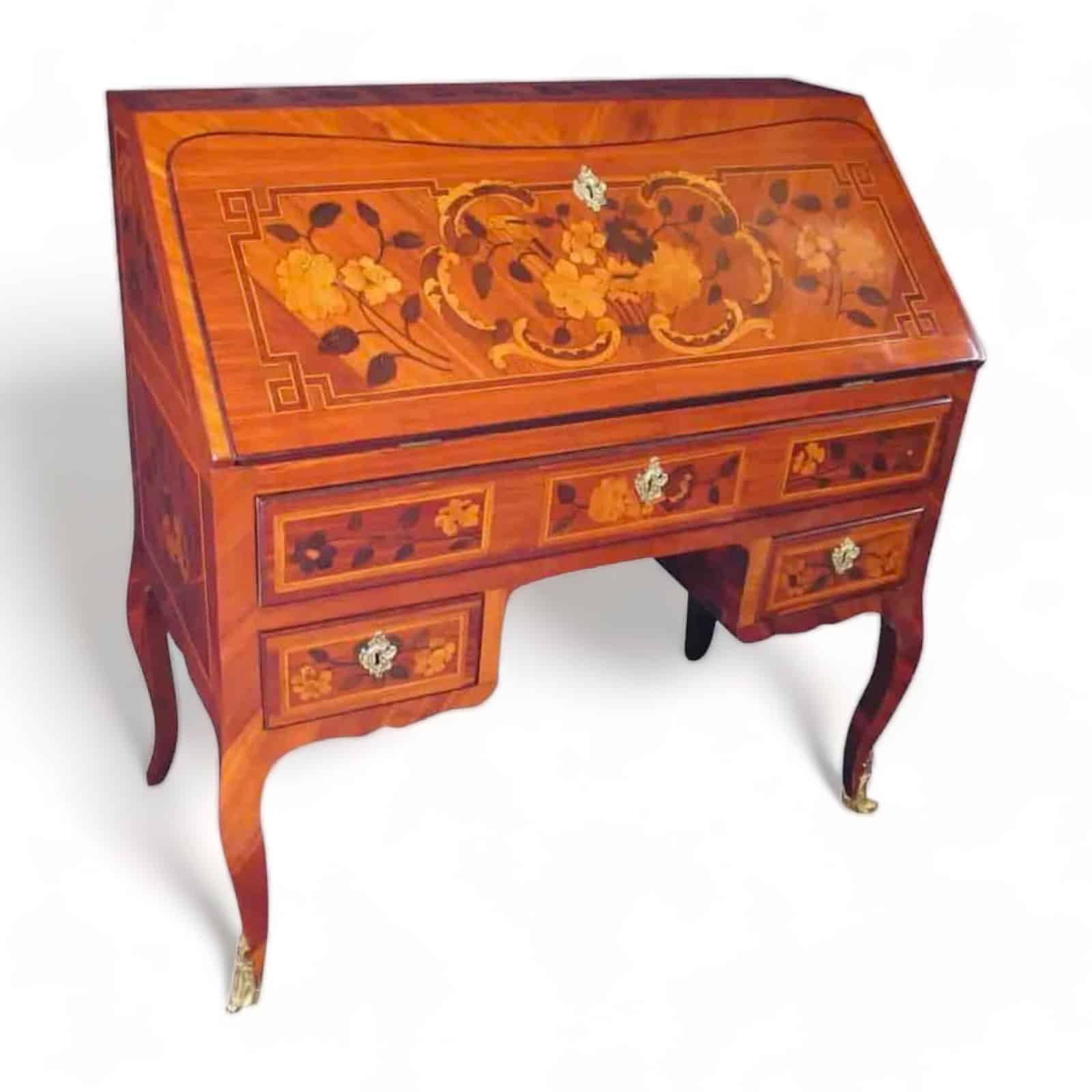

The Influence of Flower Marquetry on Furniture and Interior Design
Flower marquetry played a crucial role in 18th century furniture design, especially in France, where it became synonymous with luxury and refinement. Cabinetmakers used marquetry to elevate their furniture, transforming it into works of art.
One famous example of flower marquetry can be found in the work of André-Charles Boulle, a French cabinetmaker known for his intricate marquetry. Boulle’s floral designs set the standard for 18th-century furniture, influencing generations of craftsmen. His work still inspires antique collectors and designers today.
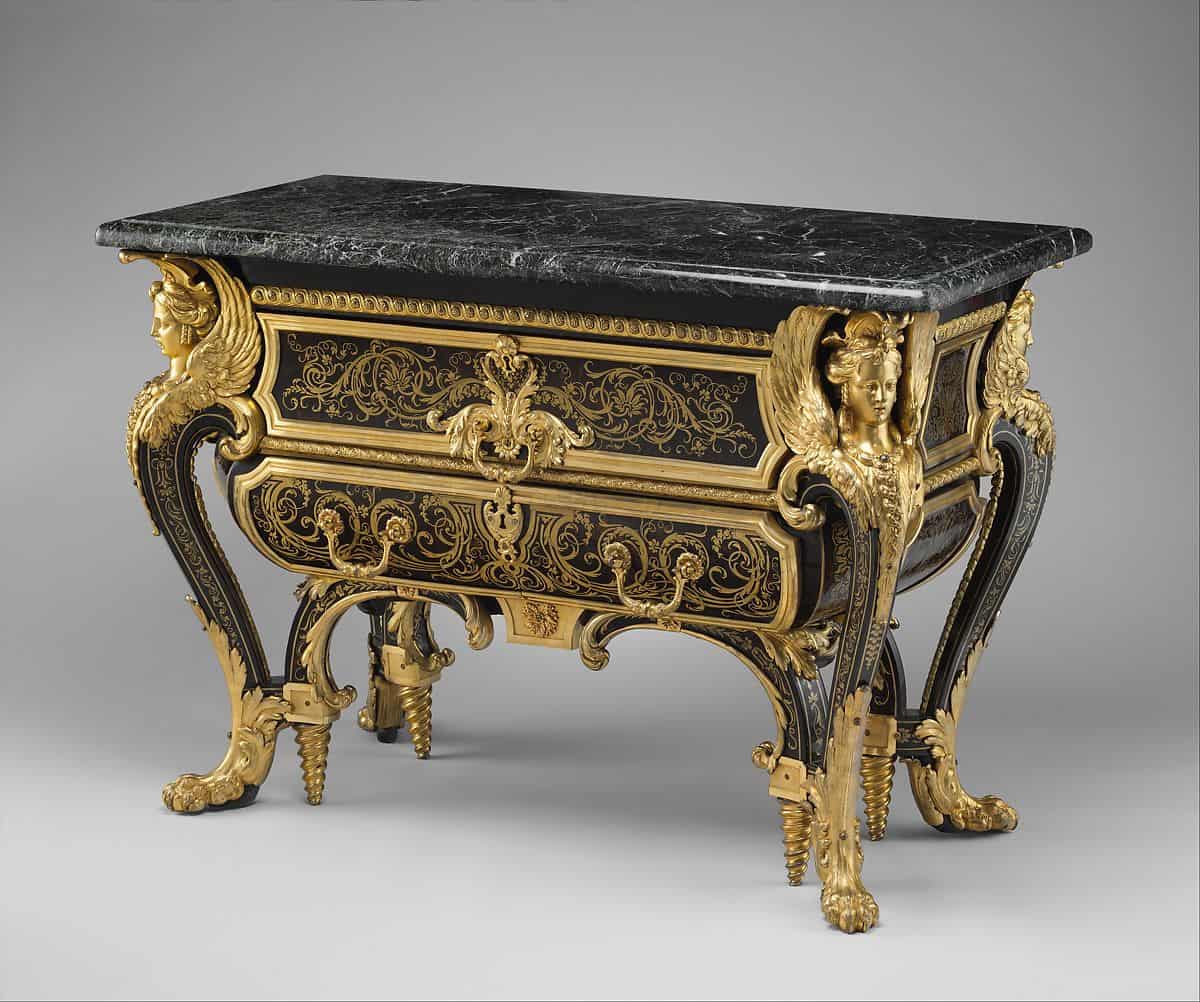

Flower marquetry extended beyond furniture, appearing on mirrors, clocks, and decorative boxes. Many pieces combined flower marquetry with other techniques like gilt-bronze mounts, creating luxurious, multifunctional objects.
Flower marquetry also adorned panels and doors of cabinets, commodes, and armoires. These intricate floral designs, paired with carvings and gilding, made such pieces highly sought after by aristocrats and royalty, who saw them as symbols of wealth and refinement.
The Enduring Appeal of 18th Century Flower Marquetry
Though flower marquetry fell out of favor in the 19th century, it remains highly valued by collectors and antique enthusiasts today. The intricate craftsmanship and timeless beauty of flower marquetry make it a prized addition to any collection. Many pieces can still be found in museums and private collections, continuing to inspire awe.
For modern collectors and designers, the appeal of 18th century flower marquetry lies in its ability to combine artistry and functionality. These furniture pieces aren’t just practical—they tell a story of craftsmanship, luxury, and the beauty of nature.
In the world of antique furniture, 18th century flower marquetry represents the height of artistic expression and refinement. Whether you’re an antique enthusiast, a history lover, or a designer seeking inspiration, the legacy of flower marquetry remains as vibrant and captivating as the delicate blooms it depicts.
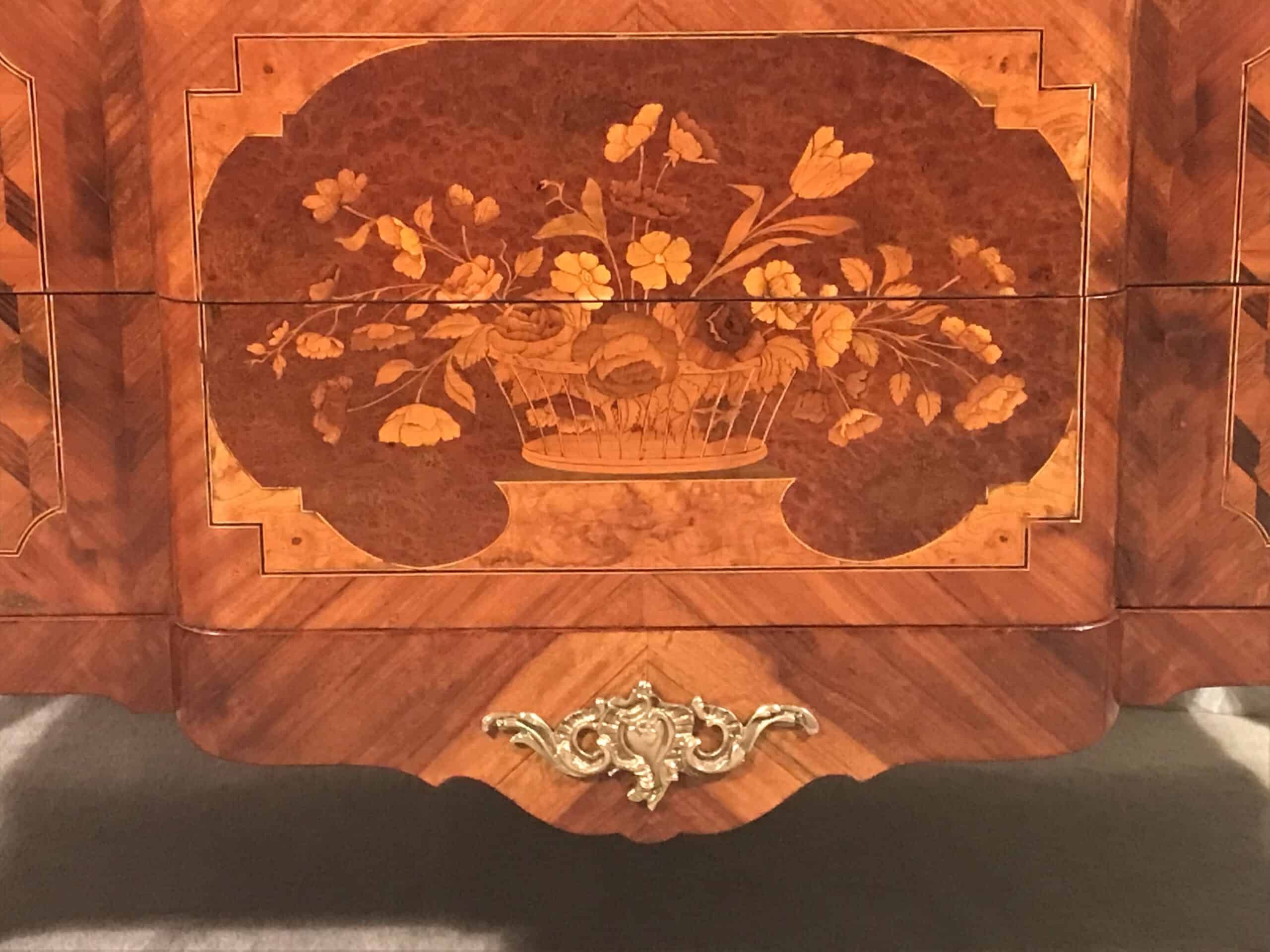

Conclusion
Flower marquetry from the 18th century is a remarkable example of craftsmanship and artistry. Originating in the Renaissance and reaching its peak during the Rococo period, it remains a key element in the history of decorative arts. Through intricate inlay techniques and the careful selection of materials, artisans created stunning floral designs that celebrated the beauty of nature. The influence of botanical studies during this time enriched the precision and symbolism of these works, adding a layer of scientific fascination to their aesthetic appeal. Today, 18th century flower marquetry continues to captivate art lovers, antique collectors, and designers, enchanting those who appreciate skilled craftsmanship and the fusion of art and nature.


